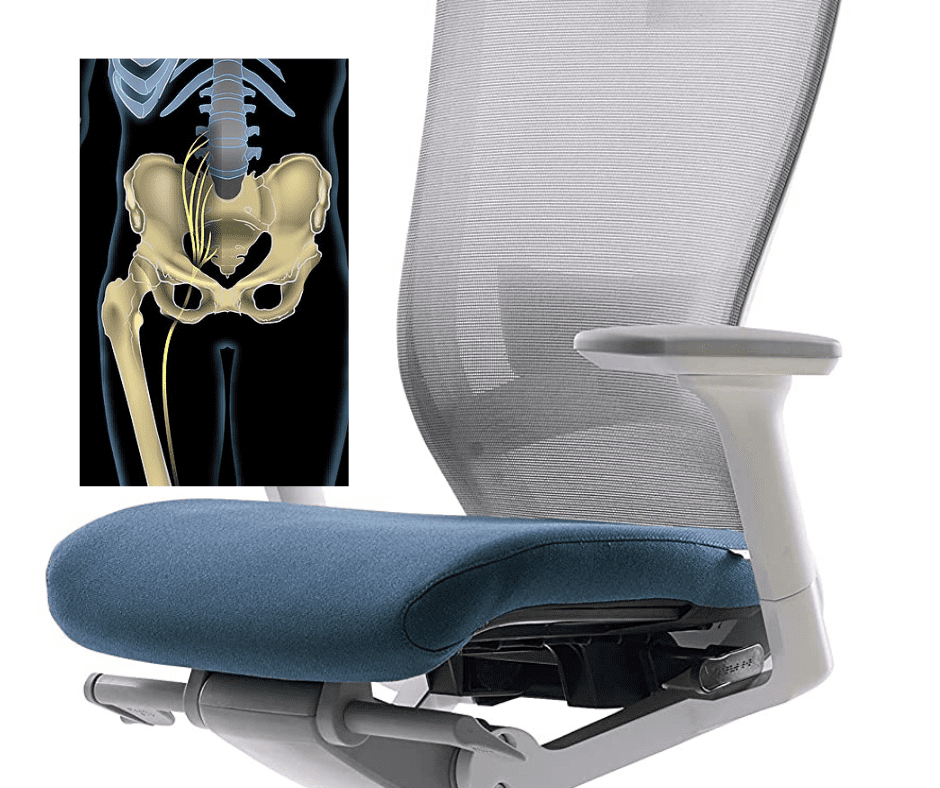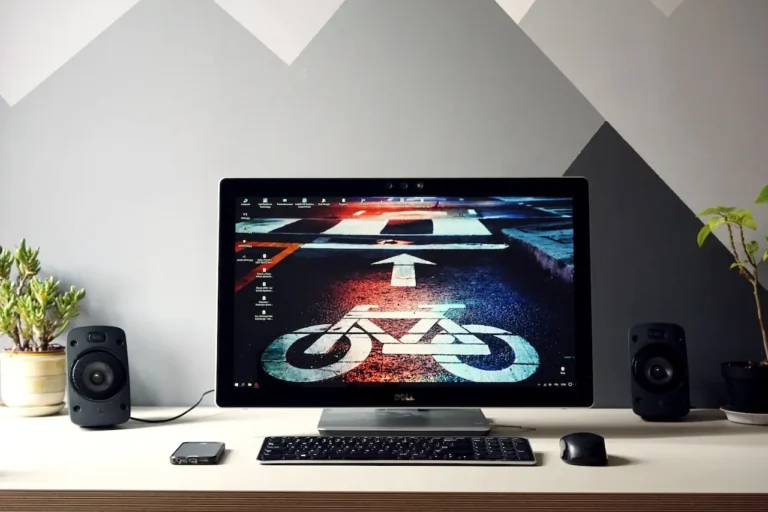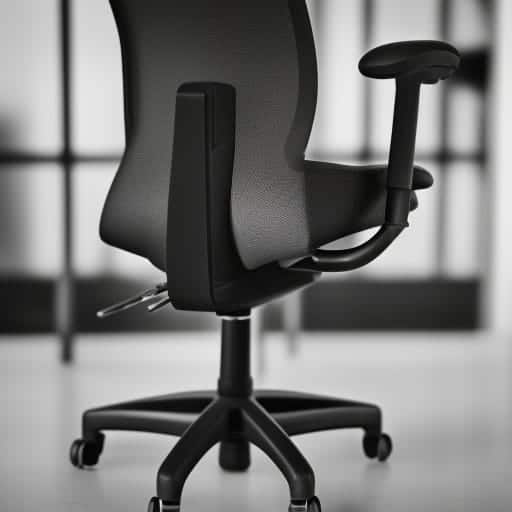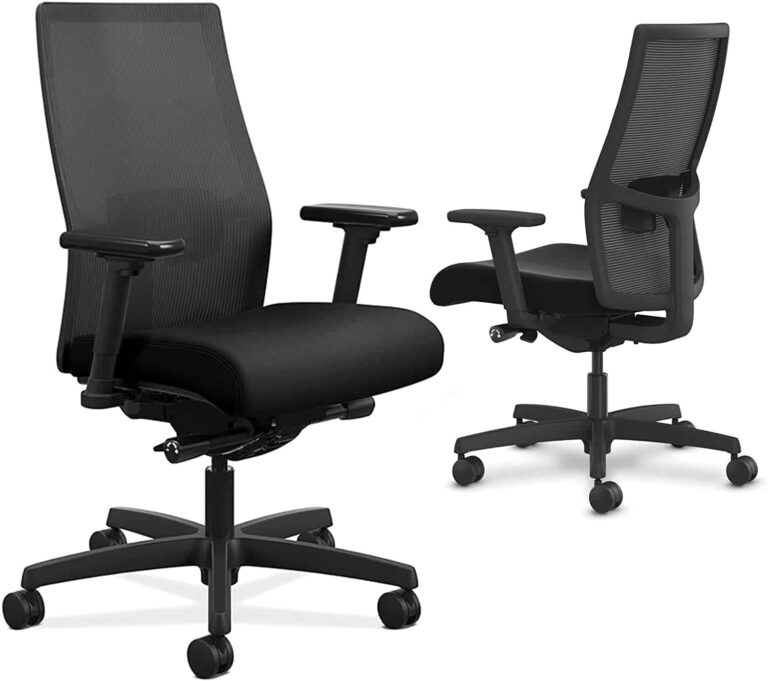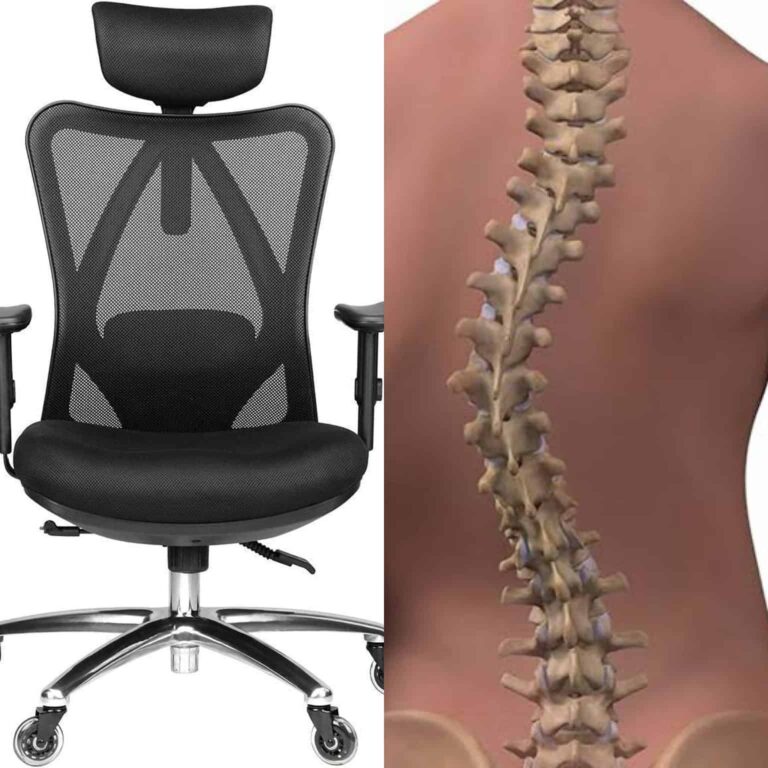10 Best Office Chair for Sciatica to Reduce Pain
Sciatica is a painful condition that sometimes affects your lower back and can sometimes extend to your thighs and legs.
This is a common condition that can affect anyone at any time regardless of age or gender.
There are many different causes of sciatica but a poorly designed office chair can cause sciatica by forcing you to sit in a poor posture.
This can lead to unnecessary pain and discomfort that you don’t have to deal with.
There are plenty of office chairs available that will alleviate pressure off of the lower back and prevent sciatic nerve pain.
A poorly designed office chair can do a lot of damage to your back.
In fact, it will make your pain or burning sensation worse.
On the other hand, the best office chair for sciatica will relieve your pain and make your sciatica a lot easier to live with.
In today’s post, I’ll cover the various aspects of the best office chair for sciatica and how it can help to prevent lower back pain and sciatica.
But before diving into the main topic, let’s understand some basic things that will help you prevent Sciatica better.
What Is Sciatica?

Sciatica is a type of pain that is caused by irritation or compression of the sciatic nerve.
The sciatic nerve is the largest nerve in the body and it runs from the lower back, through the buttocks, and down the legs.
Sciatica typically causes pain that radiates from the lower back and down one leg, although it can sometimes affect both legs.
It can also cause tingling, numbness, and muscle weakness in the affected leg.
Causes of Sciatica
Sciatica is often caused by a herniated disc in the spine, which puts pressure on the sciatic nerve.
Other potential causes include degenerative disc disease, spinal stenosis (narrowing of the spinal canal), and spinal tumors.
Sciatica can also be caused by pregnancy, as the growing uterus puts pressure on the sciatic nerve.
Treatment for Sciatica
Treatment for sciatica may include medications, physical therapy, and in some cases, surgery.
Most people with sciatica are able to find relief with non-surgical treatments.
Symptoms
Symptoms of sciatica can vary but may include:
- Pain that radiates down the leg, sometimes as far as the foot
- Numbness or tingling in the leg or foot
- Weakness in the leg or foot
- Difficulty moving the leg or foot
- Pain that is worse when sitting
If you are experiencing any of these symptoms, it is important to see a healthcare provider for a proper diagnosis and treatment plan. Treatment options for sciatica may include physical therapy, medications, or surgery, depending on the cause and severity of the condition.
Key Factors to Choosing the best office chair for sciatica
There are several key factors to consider when choosing an office chair that is suitable for individuals with sciatica:
Lumbar support:
A chair with good lumbar support can help alleviate pressure on the lower back, which is important for individuals with sciatica.
Adjustability:
An adjustable chair allows you to customize the seat height and backrest angle to fit your body, which can help reduce pressure on the sciatic nerve.
Comfort:
Comfort is crucial for reducing the pressure on the sciatic nerve. Look for an office chair with a comfortable, padded seat and backrest that will provide good support.
Ergonomic design:
An ergonomic chair can help reduce the risk of sciatica by promoting good posture and reducing strain on the lower back.
Look for chairs with adjustable lumbar support, adjustable seat height, and adjustable armrests.
Seat cushion:
A chair with a well-padded seat cushion can help reduce pressure on the lower back and buttocks, which can help alleviate sciatica pain.
Armrests:
Armrests can help take some of the strain off the shoulders and neck, which can help reduce sciatica pain.
Material:
The material of the chair can also play a vital role in its comfort and support.
Look for chairs with high-density foam or memory foam in the seat and backrest for added comfort and support.
Size and weight capacity:
Make sure to choose a chair that is the right size for you and can support your weight.
Price:
Office chairs can range in price from under $100 to over $1,000.
So it is important to find one that fits your budget.
However, keep in mind that a higher-priced chair may offer more features and better quality, which can be worth the investment in the long run.
Benefits of Ergonomic Office Chairs for Sciatica
Ergonomic office chairs can provide several benefits for individuals with sciatica, a condition characterized by pain in the lower back, buttocks, and legs.
Some of the benefits include:
Improved posture:
An ergonomic chair can help improve your posture by providing proper support for your lower back and lumbar region.
This can help reduce the strain on your lower back, which can alleviate sciatica pain.
Adjustability:
Ergonomic chairs are adjustable, so you can customize the chair to fit your body and provide the right level of support.
This includes adjusting the seat height, backrest angle, and armrest height to ensure that you are sitting in a comfortable and neutral position.
Comfort:
Ergonomic chairs are designed to be comfortable and supportive, which can help reduce fatigue and discomfort while sitting for long periods of time.
Increased blood circulation:
Poor blood circulation can contribute to sciatica pain, and sitting for long periods of time can further impair circulation.
An ergonomic chair with features like a built-in footrest or adjustable lumbar support can help improve circulation and reduce sciatica pain.
Reduced pressure on the lower back:
Some ergonomic office chairs have a contoured seat and backrest to help distribute weight evenly and reduce pressure on the lower back.
Movement:
An ergonomic chair with a swivel base and wheels can allow the user to easily move around and change positions, which can help reduce stiffness and discomfort.
In summary, an ergonomic office chair can help reduce sciatica pain by providing proper support, adjustability, movement, and good posture.
It’s important to find an ergonomic chair that fits your body and meets your needs and to adjust it regularly to maintain proper posture and comfort.
It’s important to note that an ergonomic chair is just one component of a healthy workspace.
It’s also important to take breaks, stretch, and vary your position throughout the day to help prevent sciatica pain.
Best posture practices for those with sciatica
Sciatica is a type of pain that is caused by irritation or compression of the sciatic nerve.
It can be a chronic condition that can be managed with various treatment approaches, including lifestyle changes, medication, and physical therapy.
Maintaining good posture is an important part of managing sciatica and can help alleviate pain and improve overall comfort.
Here are some posture practices that may be helpful for those with sciatica:
Stand up straight:
Good posture can help alleviate pressure on your sciatic nerve.
Keep your head up, and shoulders back, and try to distribute your weight evenly on both feet.
Use good ergonomic practices:
When sitting, use a chair that supports your lower back and keep your feet flat on the ground.
Avoid crossing your legs and try to maintain a natural curve in your lower back.
Sleep on a comfortable, supportive mattress:
A supportive mattress can help reduce pressure on your lower back and alleviate sciatica pain.
Stretch regularly:
Stretching can help alleviate muscle tension and improve flexibility, which can in turn help reduce sciatica pain.
So, don’t forget to stretch regularly.
Use good posture when lifting:
Avoid lifting heavy objects by bending at the waist.
Instead, bend at the knees and lift with your legs to help protect your lower back.
Use a lumbar roll:
A lumbar roll is a small cushion that you can place in the small of your back to help maintain proper posture while sitting.
Avoid carrying heavy bags:
Carrying a heavy bag on one shoulder can cause you to lean to one side, which can put a strain on your back and exacerbate sciatica pain.
Instead, try to distribute the weight evenly between both shoulders.
Avoid sitting for long periods of time:
If you must sit, make sure to sit in a chair with good lumbar support and take breaks to stand up and stretch.
It’s important to remember that everyone’s body is different, and what works for one person may not work for another.
If you are experiencing chronic sciatica pain, it’s important to consult with a healthcare provider for a personalized treatment plan.
Here is the list of the best office chair for sciatica
1. Herman Miller Aeron Ergonomic Chair-The best office chair for sciatica with the PostureFit SL backrest!
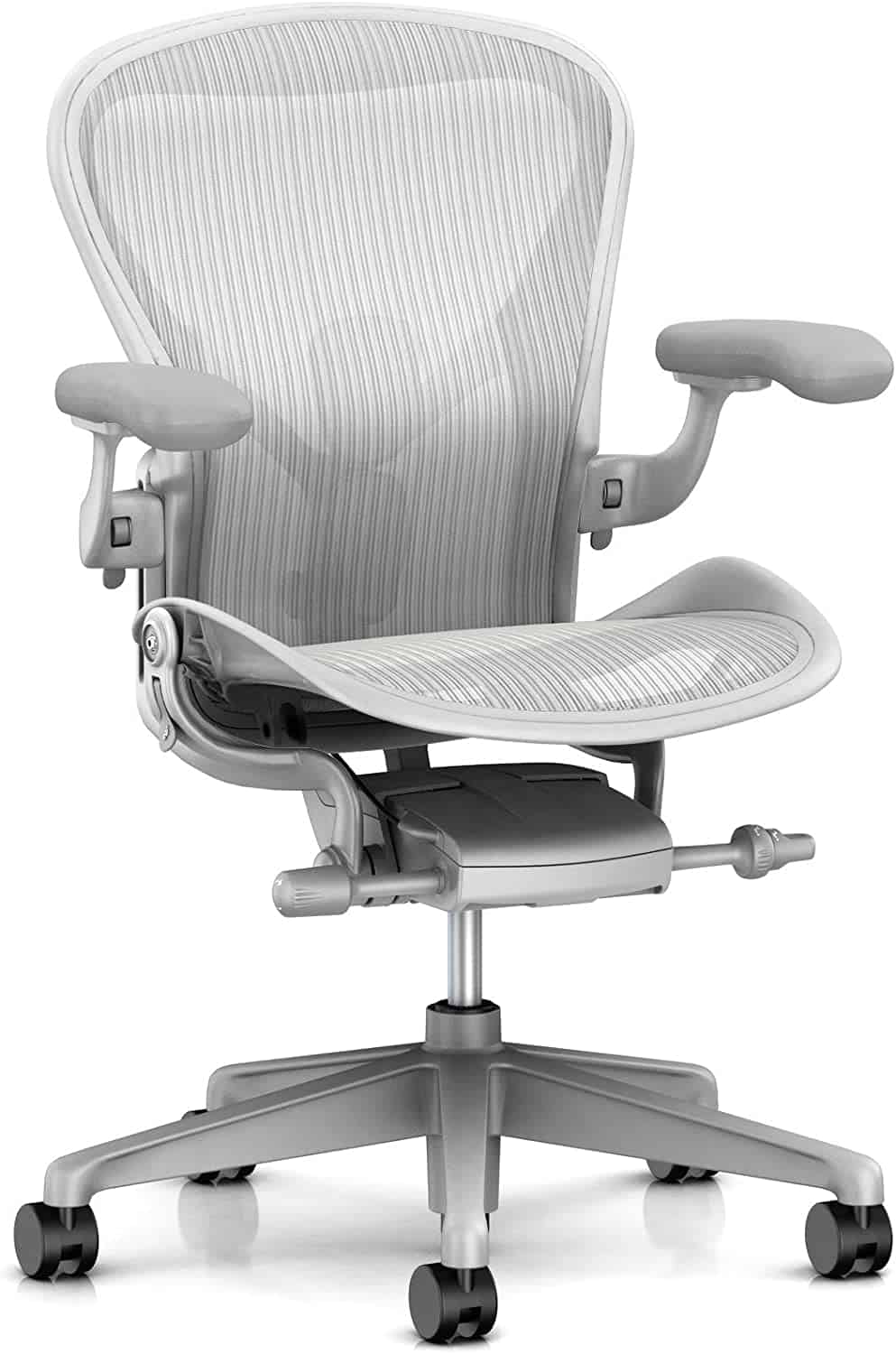
Specifications
- Color: Mineral
- Brand: Herman Miller
- Chair Dimensions: 16.75″D x 27″W x 41″H
- Material: Recycled Material
- Seat heights: 16”-20.5”
- Maximum Weight Recommendation: 300 Pounds
Our research team has put it in the first place because it has a sleek, modern industrial design that seamlessly blends both form and function.
The 8Z Pellicle suspension seat and back are designed to provide support and comfort for your body by dividing the seat and back into eight zones of varying tension.
This allows your body to be cradled and supported in all the right places, providing you with a more comfortable experience.
The PostureFit SL backrest supports your spine while maintaining the natural forward tilt of the pelvis.
It’s individual and adjustable lumbar support pads stabilize the base of the spine for a more powerful posture while seated.
2. Steelcase Gesture Office Chair-One of the best office chairs for sciatica with 360 Degree Rotating Arms!
Steelcase Gesture Office Chair

Specifications
- Color: Graphite
- Brand: Steelcase
- Chair Dimensions: 23.63″D x 34.63″W x 44.45″H
- Material: Aluminium, Fabric
- Frame Material: Aluminum
- Maximum Weight Recommendation: 400 Pounds
Pros
- Premium Seat Comfort for All Day Support
- 360 Degree Rotating Arms
- Back Support
- pneumatic seat height adjustment
- Wheels for carpet flooring
Cons
- Costly
3. Steelcase Leap Office Chair-The best living room chair for sciatica nerve pain with lower back firmness control!
Steelcase Leap Office Chair
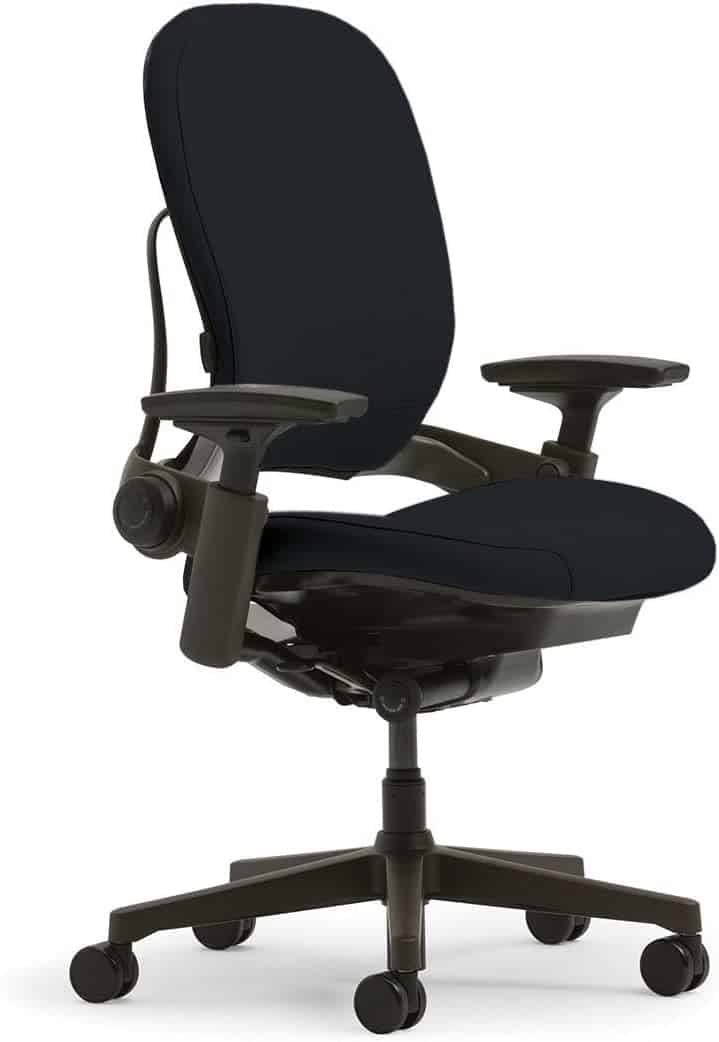
Specifications
- Color: Black/Black
- Brand: Steelcase
- Chair Dimensions: 25″D x 27″W x 43.5″H
- Material: Aluminum
- Maximum Weight Recommendation: 400 Pounds
Pros
- Adjustable Lumbar
- Adjustable Height
- Adjustable seat depth
- Lower back firmness control
- 5-position recline lock
- All-day comfort and back support
Cons
- Expensive
4. Ergohuman High Back Swivel Chair with Headrest-One of the best chairs for sciatica with eight ergonomic adjustments!
Ergohuman High Back Swivel
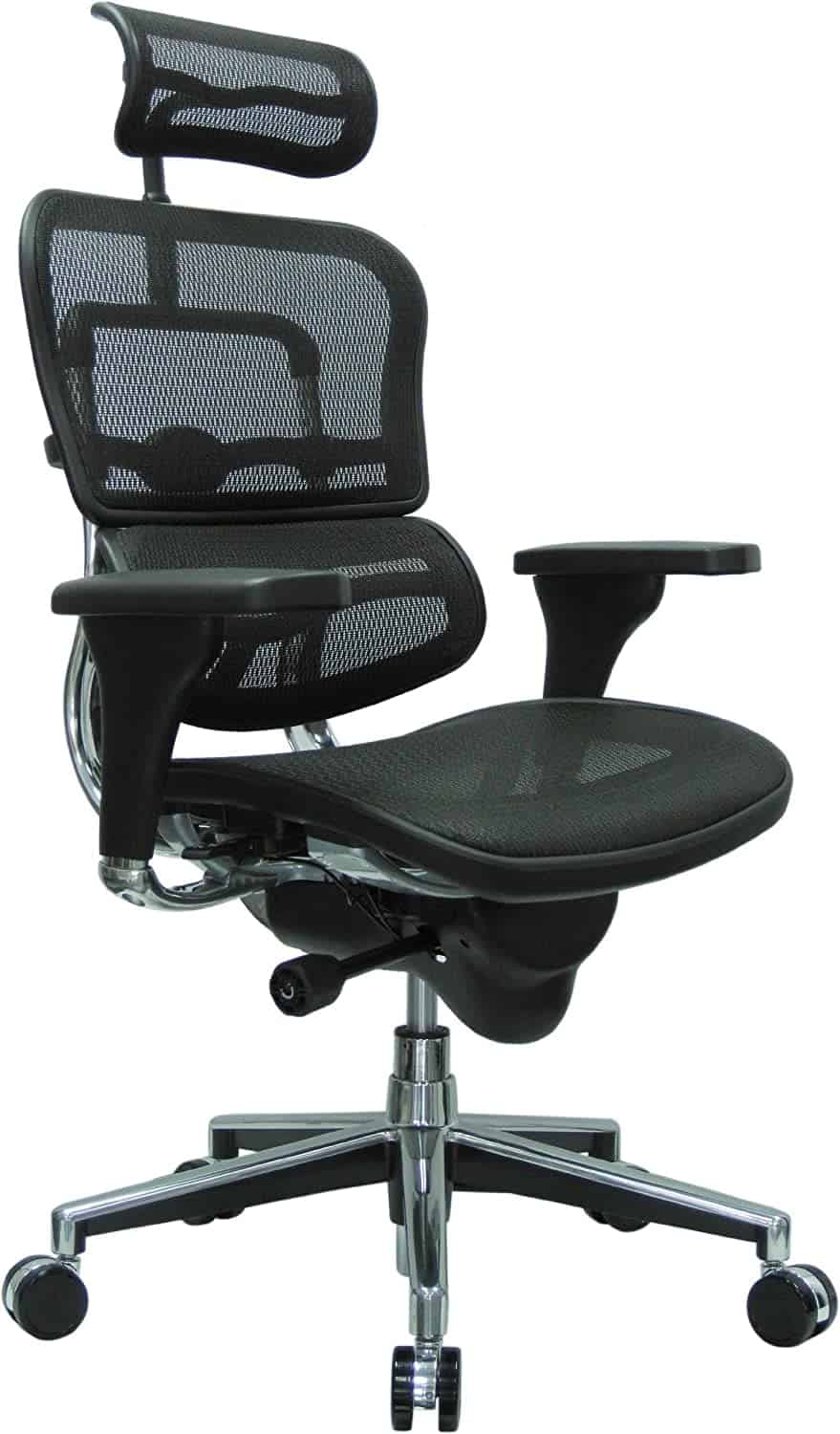
Specifications
- Color: Black
- Brand: Ergohuman
- Chair Dimensions: 30″D x 29″W x 50″H
- Seat dimensions:18.5” D x 20.5” W
- Material: Mesh
- Maximum Weight Recommendation: 250 Pounds
Pros
- Feature eight ergonomic adjustments
- Tilt tension control
- Tilt lock
- Adjustable seat height
- Adjustable Height
Cons
- Difficult assembly
5. SIDIZ T50 Ergonomic Home Office Chair
Pros
- 2-Way Lumbar Support
- 3-Way Armrest
- Adjustable Seat Depth
- Adjustable Headrest
Cons
- The Headrest feature needed to be better
6. Ticova Ergonomic Office Chair-The best chair for sciatica pain with 3D Metal Armrest!
Ticova Ergonomic Office Chair

Specifications
- Color: Dark
- Brand: Ticova
- Chair Dimensions: 27″D x 9.8″W x 20.9″H
- Material: Plastic
- Frame Material: Polypropylene, Nylon
- Maximum Weight Recommendation: 280 Pounds
- Seat Material Type: Foam
Pros
- Adjustable Lumbar Support
- 3D Metal Armrest
- Rotatable Headrest
Cons
- One year warranty
7. Office Star ProGrid Breathable Mesh High Back Manager’s Office Chair
Office Star ProGrid Breathable Office Chair

Specifications
- Color: Coal Freeflex Fabric
- Brand: Office Star
- Chair Dimensions: 29″D x 27.75″W x 46″H
- Material: Engineered Wood, Mesh Fabric, Foam, Alloy Steel, Polypropylene
- Frame Material: Nylon
- Maximum Weight Recommendation: 275 Pounds
Pros
- Adjustable Seat Height
- Multi-Function Tilt Control
- 360° Swivel
- 5 Level Multi Function Control
- Seat Slider
Cons
- Lumbar Support should have been better
8. FelixKing Ergonomic Desk Chair-The best desk chair for sciatica with excellent elasticity!
FelixKing Ergonomic Desk Chair

Specifications
- Color: Black
- Brand: FelixKing
- Chair Dimensions: 25.2″D x 25.2″W x 37.4″H
- Material: Mesh, Nylon, Polyurethane
- Maximum Weight Recommendation: 150 Kilograms
Pros
- Thick armest
- Adjustable lumbar support
- High-elastic mesh
- Excellent elasticity
Cons
- One Year Warranty
9. GABRYLLY Ergonomic Mesh Office Chair
GABRYLLY Ergonomic Mesh Office Chair

Specifications
- Color: Black
- Brand: GABRYLLY
- Chair Dimensions: 22″D x 25.2″W x 45.3″H
- Material: Steel, mesh, nylon
- Maximum Weight Recommendation: 280 Pounds
Pros
- Adjustable Height
- Ergonomic lumbar support
- Adjustable flip-up arms 45°
- Tilt-back function
Cons
- The headrest isn’t suitable for all heights
10. DRAGONN by VIVO Ergonomic Kneeling Chair
DRAGONN by VIVO Ergonomic Kneeling Chair

Specifications
- Color: Black
- Brand: DRAGON
- Chair Dimensions: 26.2″D x 18.7″W x 8″H
- Material: Mesh, Metal
- Maximum Weight Recommendation: 250 Pounds
Pros
- Work productively for longer periods
- Relieve back pain & stress
- Improve Your Posture
Cons
- No armrests
Conclusion
I hope this article will give you a clear idea about the best office chair for sciatica and help you to pick the right one to get relief from sciatica pain.
So what are you waiting for?
Go out there and get yourself the best chair for sciatica that helps you sit more comfortably, while also helping you avoid pain!
FAQs(Frequently Asked Questions)
Is sitting cross-legged bad for sciatica?
Sitting cross-legged can be comfortable for some people and uncomfortable for others.
It’s not a position that is generally recommended for people with sciatica, however, because it can put pressure on the sciatic nerve and cause discomfort.
If you have sciatica, it’s generally best to sit with your feet flat on the ground and your knees bent at about a 90-degree angle.
What kind of office chair is best for sciatica?
The best office chair for someone with sciatica will depend on their specific needs and preferences, but there are some general features to look for in an office chair for sciatica include:
1. Ergonomic design
2. Adjustability
3. Firmness
4. Backrest angle, and
5. Good lumbar support.
How do you sit in office chair with sciatica?
Sciatica is a term used to describe pain that radiates along the sciatic nerve, which runs from the lower back through the buttocks and down the legs.
If you have sciatica and are experiencing discomfort while sitting in an office chair, there are a few things you can try to help alleviate the pain:
1. Adjust the chair to fit your body
2. Use a lumbar roll
3. Take breaks and stretch and the last thing is
4. Invest in a good chair: If your chair is not comfortable or doesn’t provide proper support, it may be worth investing in a new chair that is designed specifically to support good posture and alleviate back pain.
Can my desk chair cause sciatica?
It is possible that sitting for long periods of time in an uncomfortable chair could contribute to the development of sciatica or exacerbate existing sciatica symptoms.
Sciatica is a type of pain that is caused by irritation or compression of the sciatic nerve, which runs from the lower back down through the buttocks and legs.
Poor posture or sitting in a chair that is not properly adjusted to your body can cause strain on the lower back and hips, which may lead to sciatica pain.
Is sitting in a chair good for sciatica?
Sitting in a chair can be helpful or harmful for people with sciatica, depending on the specific characteristics of the chair and the individual’s condition.
Some general principles to consider when using a chair for sciatica relief include:
1. Choose a chair with good lumbar support
2. Avoid sitting for long periods of time
3. Use an ergonomic chair
4. Experiment with different positions
It’s important to remember that sitting in a chair is just one aspect of managing sciatica.
It’s also important to engage in regular exercise, stretch, and use good posture throughout the day.
If you have severe sciatica or other chronic pain conditions, it’s a good idea to consult with a healthcare provider for personalized advice.
Is it better to sit on a hard or soft chair with sciatica?
It is generally recommended to sit on a chair that provides good lower back support and promotes proper posture when you have sciatica.
A chair with a lumbar roll or cushion that supports the natural curvature of your lower back can be helpful.
In terms of whether a hard or soft chair is better, it ultimately depends on your personal preference and what is most comfortable for you.
Some people may find a softer chair more comfortable, while others may prefer a firmer chair.
It is important to find a chair that provides good support and helps you maintain good posture, rather than focusing on whether it is hard or soft.
Are kneeling chairs good for sciatica?
Kneeling chairs are a type of chair that is designed to promote good posture by aligning the spine and pelvis in a more natural position.
Some people find that kneeling chairs can help alleviate back pain, including sciatica.
However, it’s important to note that kneeling chairs are not a cure-all for sciatica or any other type of back pain.
Whether or not a kneeling chair will be helpful for your sciatica will depend on the specific cause of your pain and your individual needs and preferences.
If you are considering using a kneeling chair to help with your sciatica, it’s a good idea to consult with a healthcare professional, such as a doctor or physical therapist, for guidance.
They can assess your condition and recommend the best course of treatment, which may or may not include the use of a kneeling chair. In addition to using a kneeling chair, other strategies that may be helpful for managing sciatica include stretching, exercise, and pain medication.

